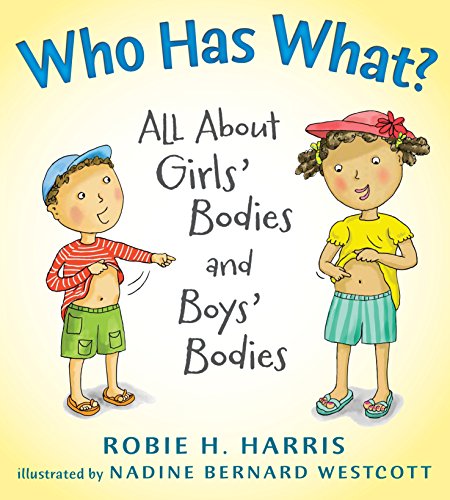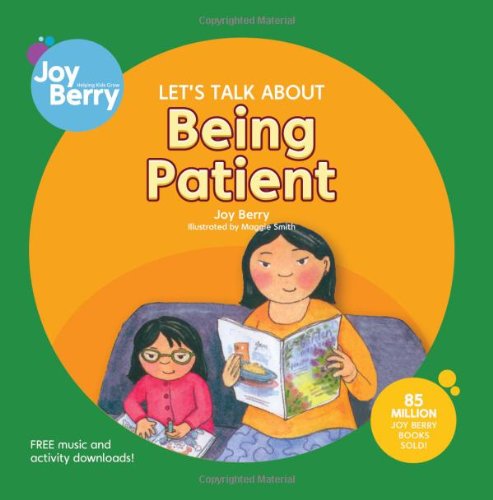-
Do You Have a Secret?
Jennifer Moore-Mallinos, Marta Fabrega
Paperback (B.E.S., March 1, 2005)Every child has secrets, and many secrets are fun to keep, for instance, a surprise birthday gift for Mom, or a secret handshake with a young friend. But sometimes, children have secrets that make them feel bad, and these secrets are best shared with their parents, or with some trusted older person. A child who is bullied might be inclined to keep it secret, but it's always best to tell parents about it. Or children who are touched intimately and improperly by an older person will soon feel better if they reveal the secret to parents. This book helps kids distinguish between good and bad secrets. Even very young children have concerns and anxieties, and Let's Talk About It! books are written and illustrated especially for them. Parents are advised to read these books aloud while their preschooler listens and looks at illustrations of the boys and girls in each story. Many children in early grades will be able to read the stories for themselves. Let's Talk About It! books encourage children to explore their feelings, and then to speak openly about things that trouble them. F
F
-
Who Has What?: All About Girls' Bodies and Boys' Bodies
Robie H. Harris, Nadine Bernard Westcott
Hardcover (Candlewick, Sept. 13, 2011)First in the “Let's Talk About You and Me" series.Young children are curious about almost everything. Asking questions is one of many ways they learn about themselves and the world around them. Now, this unique series for our youngest children provides easy-to-understand facts and answers to their delightful, thoughtful, and often nonstop questions. Launching the series is WHO HAS WHAT?, a simple story following Nellie and Gus on a family outing to the beach. Humorous illustrations, conversations between the siblings, and a clear text all reassure young kids that whether they have a girl’s body or a boy’s, their bodies are perfectly normal, healthy, and wonderful. Authoring the series is Robie H. Harris, whose nonfiction books are known as the source for addressing kids’ questions about themselves, their families, and their friends. Nadine Bernard Westcott’s accurate and entertaining illustrations offer an inviting way for children to discover straightforward, fascinating information about themselves. N
N
-
When My Parents Forgot How to Be Friends
Jennifer Moore-Mallinos, Marta Fabrega
Paperback (B.E.S., March 1, 2005)Young children become confused and hurt when their parents constantly argue, then decide to divorce. This sensitively written book assures boys and girls that children are in no way responsible for their parents' inability to get along together. It lets kids know that although one parent chooses to move away from the home, both parents continue to love their little boy or girl. Both Mom and Dad will continue to spend happy times with them. Even very young children have concerns and anxieties, and Let's Talk About It! books are written and illustrated especially for them. Parents are advised to read these books aloud while their preschooler listens and looks at illustrations of the boys and girls in each story. Many children in early grades will be able to read the stories for themselves. Let's Talk About It! books encourage children to explore their feelings, and then to speak openly about things that trouble them. K
K
-
Not Everyone Is Nice: Helping Children Learn Caution with Strangers
Frederick Alimonti, Ann Tedesco Ph.D., Erik DePrince, Jessica Volinski
Paperback (New Horizon Press, Oct. 1, 2003)Kathy is waiting for her mother outside of school when a strange car approaches. The smiling man inside offers to drive Kathy home, suggesting that her mother may be hurt or sick. Just before Kathy is ready to climb in, her mother arrives and the man speeds off. Kathy is confused and hurt that the nice man would leave so quickly.Later that night, Kathy's parents use examples from nature of pretty but lethal plants and fish to show her that animals and people that look or seem nice may be very dangerous. Not Everyone is Nice teaches children what to do if a stranger approaches and reminds them that looking or acting nice doesn't mean a person is safe. M
M
-
Let's Talk About Saying No
Joy Berry, Joy Wilt Berry
Paperback (Scholastic Inc., May 1, 1996)Describes some of the various times when one should or should not say "No," and explains how to say "No" nicely when that is the right thing to say K
K
-
My Brother is Autistic
Jennifer Moore-Mallinos, Marta Fabrega
Paperback (B.E.S., Oct. 1, 2008)My Brother is Autistic describes a condition that affects many families. Medical experts are just beginning to understand varying degrees of autism and its impact on both the autistic child and his family. This book describes an autistic child from his brother's point of view. It talks about ways autistic kids can be helped and how they can better relate to their family and surroundings.The sensitively written Let's Talk About It! books encourage preschool-age and early-grades children to explore their feelings, deal with problems that trouble them, and understand others who have problems of their own. Each title speaks to a particular concern that children might encounter in the course of growing up. All books in this series have appealing color illustrations on every page. A short section at the back of each book offers related advice to parents. M
M
-
What's in There?: All About Before You Were Born
Robie H. Harris, Nadine Bernard Westcott
Hardcover (Candlewick, Sept. 24, 2013)Continuing her series for preschoolers, New York Times best-selling author Robie H. Harris follows the stages of pregnancy and childbirth in a matter-of-fact and comfortable way.Gus and Nellie have some exciting news: there’s going to be a baby in their family! Join them through the seasons as they watch their mother’s pregnancy with fascination and curiosity while awaiting the birth of their new baby sibling. Combining accessible, humorous, and accurate illustrations; conversations between the two siblings; and a factual text, here is the ideal book to help young children understand that the way a growing baby develops inside a woman’s body, and how a baby is born, are both perfectly normal and totally wonderful. J
J
-
My Friend Has Down Syndrome
Jennifer Moore-Mallinos, Marta Fabrega
Paperback (B.E.S. Publishing, Oct. 1, 2008)The sensitively written Let's Talk About It Books encourage preschool-age and early-grades children to explore their feelings, deal with problems that trouble them, and understand others who have problems of their own. Each title speaks to a particular concern that children might encounter in the course of growing up. All books in this series have appealing color illustrations on every page, and are available in both English and Spanish language editions. A short section at the back of each book offers related advice to parents. My Friend Has Down Syndrome explores this common chromosomal condition from a child's perspective. Younger children may be confused and have many questions when they encounter kids who have Down syndrome. Here, in this reassuring story, two children, one with Down syndrome and one without, learn that they are both good at different things and that by helping each other overcome their fears and difficulties they can accomplish a great deal together. K
K
-
Who We Are!: All About Being the Same and Being Different
Robie H. Harris, Nadine Bernard Westcott
Hardcover (Candlewick, March 22, 2016)New York Times best-selling author Robie H. Harris helps preschoolers understand what makes us who we are — from our height to our hair, from the shade of our skin to our eyesight.Join Nellie, Gus, baby Jake, and their parents at Funland as they go on rides, watch performers, and play games along with many other children and grown-ups. As they enjoy their excursion, they — and young readers — notice that people are the same as one another in lots of ways, and different in lots of ways too. Accessible, humorous, family-filled illustrations; conversations between Gus and Nellie; and straightforward text come together to help children realize why it’s important to treat others the way they want to be treated and the way you want to be treated — whether a person is a lot like you or different from you, a good friend or someone you have just met or seen for the first time. M
M
-
Let's Talk About Needing Attention
Joy Wilt Berry, Maggie Smith
Paperback (Scholastic, Aug. 1, 1996)Whining, crying, and throwing tantrums to get attention, Casey comes to know that there are other, more positive ways to get attention and learns the difference between good attention and bad attention. Original. K
K
-
Let's Talk About Being Patient
Joy Berry, Maggie Smith
Paperback (Joy Berry Books, June 15, 2010)"Let's Talk About Being Patient" (Let's Talk About series) helps children understand what patience is all about. Joy Berry's pragmatic approach teaches children the importance of learning to wait, impulse control and the methods they can use to do so. Like all of Joy Berry's books, "Let's Talk About Being Patient" speaks directly to the child and acts as a problem-solving resource for parents and caregivers. The book is filled with full-color illustrations and simple text that make the sometimes-difficult information easy to take in."Let's Talk About Being Patient" includes a web address for FREE downloads."Let's Talk About Being Patient" is recommended for children ages 3-6.Joy Berry's book series include the I Love books (ages 1-3); Let's Talk About (ages 3-6); Help Me Be Good (ages 4-7); A Fun and Easy Way (ages 7-10); Winning Skills (ages 11 and up); and Good Answers to Tough Questions (ages 6-12). K
K
-
Let's Talk About Feeling Jealous
Joy Berry, Maggie Smith
Paperback (Joy Berry Books, Oct. 26, 2010)"Let's Talk About Feeling Jealous" (Let's Talk About series) helps children understand that feeling jealous is normal, and can sometimes be productive if it leads to a necessary change. Joy Berry's pragmatic approach teaches children how to handle their jealousy and focus on the good things that they have in their lives. Like all of Joy Berry's books, "Let's Talk About Feeling Jealous" speaks directly to the child and acts as a problem-solving resource for parents and caregivers. The book is filled with full-color illustrations and simple text that make the sometimes-difficult information easy to take in."Let's Talk About Feeling Jealous" includes a web address for FREE downloads."Let's Talk About Feeling Jealous" is recommended for children ages 3-6.Joy Berry's book series include the I Love books (ages 1-3); Let's Talk About (ages 3-6); Help Me Be Good (ages 4-7); A Fun and Easy Way (ages 7-10); Winning Skills (ages 11 and up); and Good Answers to Tough Questions (ages 6-12). K
K